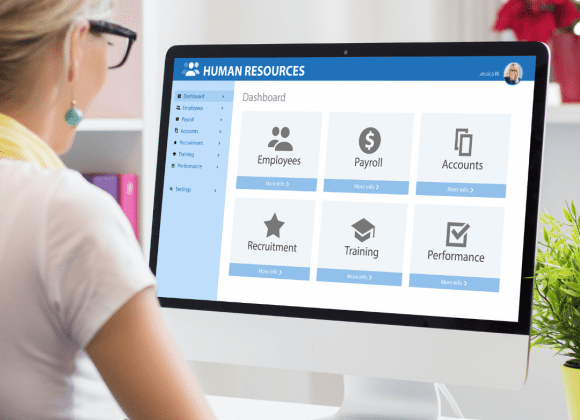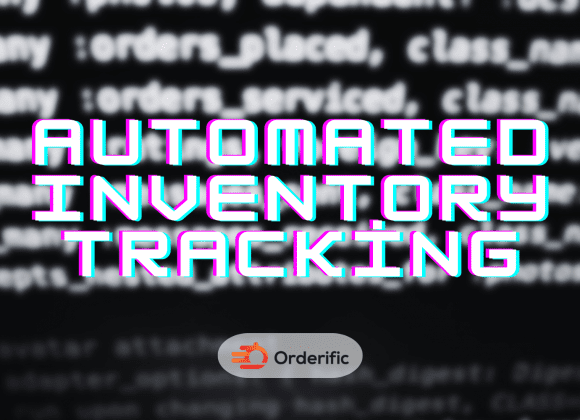Asset tracking and management are essential components of operating modern sports facilities. Managing and keeping track of different types of equipment, ranging from gym gear to sports gear, can pose a considerable challenge. Tracking systems allow facilities managers to oversee and monitor equipment usage, location, and maintenance needs. By implementing a comprehensive system, managers can better utilize assets with detailed usage patterns and equipment availability. In a sports facility, it is critical to provide customers with high-quality services while maximizing facility performance.
Why Use Asset Management System for Stadiums?
In 2024 sports clubs need to implement an asset management system for stadiums. Data collected helps inform decisions about equipment upgrades and maintenance scheduling, reducing the risk of failures during events. By tracking asset usage and identifying areas of underutilization, facility managers can make better inventory decisions, saving money for the club.
With real-time asset monitoring, managers can quickly address issues and streamline processes like inventory management and maintenance schedules. Asset management systems can also improve customer satisfaction by ensuring equipment availability and reducing downtime due to equipment failures.
Benefits of Stadium Asset Management Solutions
Do you ever wonder how sports facilities keep track of their countless assets? The answer lies within asset management solutions, specifically asset tracking. This practice ensures that sports teams have access to their necessary equipment and can avoid lost or forgotten items. With the help of asset-tracking technology, teams can optimize their resources and save money in the long run. These solutions provide valuable data on inventory levels, maintenance schedules, and more, making it easier to make informed decisions about the future of the facility. It’s fascinating to think about how far technology has come in the sports industry.
Advantages of Stadium Asset Management Solutions
Asset tracking has become an essential aspect of any business operation. Stadium asset management solutions have revolutionized the sports industry. Innovative technology allows sports facilities to keep track of their assets efficiently, making the management of stadiums more effective. Asset tracking in sports facilities benefits organizations in different ways, such as minimizing lost and stolen items, providing accurate data on asset usage, and reducing unnecessary purchases. With asset tracking, administrators can analyze real-time reports and make informed decisions based on reliable information. Therefore, a sports business that hopes to stay competitive must consider implementing an asset management system to boost efficiency, streamline operations, and optimize resource utilization.

Asset Lifecycle Management
Asset Lifecycle Management is a crucial aspect of managing any facility for sports facilities. The asset lifecycle includes planning, acquisition, operation, maintenance, and disposal of these assets. This comprehensive process helps facilities managers track the cost of each asset, monitor its condition, and determine when it needs to be replaced. Asset Lifecycle Management, sports facilities can run smoothly and provide the amenities athletes need to excel.
A key component of Asset Lifecycle Management is the planning stage. This involves identifying the assets needed for the facility, creating a budget, and determining the expected lifespan of each asset.
Why Asset Lifecycle Management Is Important
Sports clubs rely on effective asset lifecycle management to ensure assets are well-maintained, safe, and compliant. By tracking condition, performance, and value, clubs can make informed decisions about replacement, upgrades, and budgeting. This approach helps save money, prevent breakdowns, and promote sustainability through energy efficiency and proper disposal. Effective Asset Lifecycle Management is vital for running sports facilities smoothly and delivering quality services to athletes and fans. Implementing an asset-tracking system can enhance the efficient management of modern sports facilities, enabling seamless asset tracking and more.
Increased Accountability
Accountability is increasingly vital in sports facility operations. Rising costs and stakeholder demands necessitate transparency, efficiency, and compliance. Facility managers must stay abreast of trends, ensure user safety and enjoyment, and promote environmental sustainability. Proactive issue identification, effective management strategies, and ongoing monitoring ensure long-term success.
Sports facility managers can boost accountability through technology. Smart building systems use sensors and automation tools to provide real-time energy usage, occupancy, and maintenance data.

Time & Attendance Tracking
Accurate time and attendance tracking holds immense importance in today’s fast-paced world, particularly in efficiently managing assets in sports facilities. Efficiently tracking assets is crucial for organizational success. With advanced asset tracking technologies, organizations can monitor and manage assets in real-time, allowing them to identify issues before they become problems. By using time and attendance tracking, organizations can optimize their asset tracking and management strategies and ensure making the most of their resources.
From sports facilities to other organizations, advanced asset tracking technologies are providing valuable insights and helping them streamline their operations in exciting new ways. With the continuous advancement of technology, the potential for asset tracking and management in sports facilities knows no bounds. The possibilities are endless, opening up a world of opportunities. By implementing cutting-edge solutions, facility managers can ensure the success and longevity of their operations, providing top-quality services to athletes and fans for years to come.
Controlled Inventory
Effective tracking and management of valuable assets lies at the core of a well-run business. It is crucial for optimizing resource utilization and ensuring operational efficiency. This is particularly true in sports facilities, where the cost of equipment, uniforms, and other assets can add up quickly.
Asset tracking is a crucial component of a controlled inventory, allowing managers to keep accurate records of equipment and other assets, and track their location and usage. By implementing a comprehensive asset management system, sports facilities can minimize losses, reduce costs, and improve overall performance.
Strategic Inventory Planning
Strategic Inventory Planning is critical for businesses looking to optimize their asset tracking and management practices. With the help of data-driven analysis, companies can effectively plan for and manage their inventory levels to maximize operational efficiency and profitability. But strategic inventory planning isn’t just about numbers and spreadsheets – it’s also an opportunity to gain fascinating insights into the intricacies of asset tracking in sports facilities and beyond.
Whether you’re dealing with high-value items like sports equipment or tracking more everyday assets like office supplies, being armed with the right information is essential for success. So don’t let your inventory management fall by the wayside – dive into the world of strategic planning to unlock the full potential of your asset tracking and management initiatives.
By implementing a comprehensive asset management system, sports facilities can minimize losses, reduce costs, and improve overall performance.
Automated Asset Discovery
The world of asset management is evolving rapidly, especially with the advent of automated asset discovery. This technological advancement is especially vital in sports facilities where asset tracking is a critical aspect of organization and maintenance. By automating the process, tracking assets has never been more efficient and well-organized. One of the biggest benefits of this technology is the provision of data and interesting information that can help analyze valuable trends and patterns. With automated asset discovery, gathering and analyzing crucial data about assets has never been easier. It’s exciting to see the advancements being made and how they’re changing the way we manage assets. By implementing automated asset discovery, sports facilities can save time and money while improving their overall operations.
By now, it’s clear that asset tracking and management are crucial for the success of modern sports facilities. From controlling inventory to ensuring efficient resource utilization, implementing an asset management system has numerous benefits for any organization.

Real-Time Information
Real-time information is becoming increasingly important in today’s world, especially when it comes to sports facilities. With the rise of technology, it’s now more accessible than ever to keep up with the latest news and updates on your favorite teams and venues. From finding out about upcoming events to getting live game-day scores, real-time information is an essential tool for sports fans everywhere. Sports facilities are also embracing this trend, with many incorporating digital displays and other cutting-edge technology to provide more accurate and up-to-date information to their customers. So, whether you’re a die-hard sports enthusiast or just someone looking to stay informed, real-time information is an indispensable resource for keeping up with the latest in the world of sports.
Real-time information has transformed sports for fans, athletes, and teams. Coaches and players now make informed decisions using real-time data, revolutionizing training, opponent analysis, and talent recruitment. Sports analytics companies provide valuable insights, giving teams a competitive edge.
Alerts and Notifications
Alerts and notifications are a key feature of asset management systems in sports facilities. By setting up customized alerts and notifications, facility managers can receive real-time updates on asset usage, maintenance needs, and any potential issues. This allows for quick action to be taken and helps prevent any major problems from arising.
Automated alerts for equipment maintenance in sports facilities are crucial. They help ensure the proper functioning of assets and prevent safety hazards for athletes and visitors.
Besides maintenance alerts, notifications can track asset usage. Managers can monitor equipment usage and ensure it meets facility demand. If there are discrepancies, managers can adjust inventory or make necessary repairs to optimize asset utilization.
Depreciation Management
Asset depreciation is a major concern for facility managers. With asset management systems in place, facility managers can easily track the depreciation of assets over time. This information helps them make informed decisions about when to retire or replace assets, ensuring that the facility is always equipped with top-performing equipment. However, simply tracking depreciation may not be enough for effective management. Facility managers must also take steps to mitigate the impact of depreciation on their facility.
Maintaining and repairing assets is key to managing depreciation. Regular servicing of HVAC systems, for instance, can prevent premature breakdowns and costly replacements, while avoiding disruptions to facility operations.
Depreciation management involves considering asset value when making purchasing decisions. Facility managers must compare the initial cost, expected lifespan, and maintenance costs. Cheaper assets may seem like bargains, but if they have shorter lifespans and require frequent repairs, they may end up costing more. Therefore, facility managers must look beyond price tags and evaluate the overall value of assets when making purchasing decisions.
Mobile-Friendly Interface
The use of mobile-friendly interfaces in asset management systems allows for easy access and monitoring of assets on the go. Facility managers can track and manage assets from their mobile devices, providing them with real-time data and updates even when they are not physically present at the facility. This convenience is especially beneficial for managers who oversee multiple locations or are often on the move.
Mobile-friendly interfaces provide a user-friendly experience, in addition to accessibility. Designed for smaller screens and touch-based interactions, they enhance navigation and system usage. This boosts efficiency and productivity as managers access information and make changes without device switching or waiting for a computer.
Mobile-friendly interfaces offer the advantage of receiving notifications and alerts directly on devices. This keeps managers informed about changes or updates regarding their assets, enabling timely responses and actions. Push notifications provide real-time updates on maintenance schedules, asset performance, and potential issues.

Cloud-Based Asset Tracking Technology
Cloud-based asset tracking technology offers numerous benefits for sports facility management. With all asset data stored in a secure cloud platform, facility managers can access and manage information from anywhere, at any time. This leads to increased efficiency and streamlined asset management processes for the facility. In this section, we will discuss some of the top benefits of using cloud-based asset-tracking technology in sports facilities.
Cloud-based asset tracking technology enables facility managers to track and manage assets from anywhere, at any time. This means all essential information is available on demand, making it easier for facility managers to make decisions quickly and efficiently. With cloud-based asset tracking technology, viewing the history of assets is made much simpler and transparent. Facility managers can easily access data such as usage times, person responsible for an item, or service dates for maintenance.
Real-time Asset Visibility
One of the greatest advantages of cloud-based asset tracking technology is its ability to provide real-time asset visibility. With accurate and up-to-date information on the location, condition, and status of all assets, facility managers can quickly identify issues and take immediate action. This level of visibility also allows for better decision-making when it comes to asset maintenance and replacement.
Improved Asset Management
Cloud-based asset tracking technology allows for more efficient and effective asset management. With the ability to track assets remotely, facility managers can easily monitor usage patterns, schedule maintenance, and identify potential issues before they become major problems. This reduces downtime and increases the lifespan of assets, ultimately saving money for the sports facility.
Why Use Mappedin?
Mappedin I sport is a dynamic navigation tool that is perfect for sports clubs in 2024. This intelligent platform offers various features that help you to manage and navigate sports facilities with ease. You no longer need to struggle with finding your way around expansive arenas, thanks to the interactive map feature of Mappedin I sport. Besides, this amazing app allows you to access relevant information such as event schedules, team schedules, and facility maps all in one centralized location. With Mappedin I sport, you can effortlessly navigate and keep track of everything in your sports club, leaving you more time to focus on your game. Say goodbye to confusion and lost time- Mappedin I sport is here to revolutionize the sporting landscape in 2024.
Conclusion
Asset tracking and management have become essential components of modern sports facilities. With the growth of the sports industry and the increasing complexity of facility operations, facility managers need an efficient system that can help them monitor their assets, manage maintenance schedules, and ensure compliance with safety regulations. Over the years, technology has significantly revolutionized the sports industry and the asset-tracking process. Much like Orderific, they prioritize customer experience, operational efficiency, and revenue growth. Schedule a FREE DEMO today to explore how Orderific can revolutionize your restaurant operations. Embrace the future, where technology harmonizes with tradition, and experience the incredible impact.
FAQs
Why is asset tracking essential for sports facilities?
Asset tracking allows facility managers to efficiently monitor and manage their assets, leading to improved efficiency, cost savings, and better decision-making for the facility.
How do advanced technologies like RFID or GPS enhance asset tracking in sports facilities?
Technologies such as RFID and GPS provide real-time data on asset location and usage, allowing for optimized operations and more efficient decision-making.
What challenges might sports facilities encounter when implementing asset tracking systems, and how can they be overcome?
Some common challenges include resistance to change from staff members, budget constraints, and lack of tech expertise.
Can you outline a step-by-step process for efficiently implementing an asset-tracking system in a sports facility?
Yes, the step-by-step process for implementing an asset-tracking system in a sports facility includes the following key steps.













